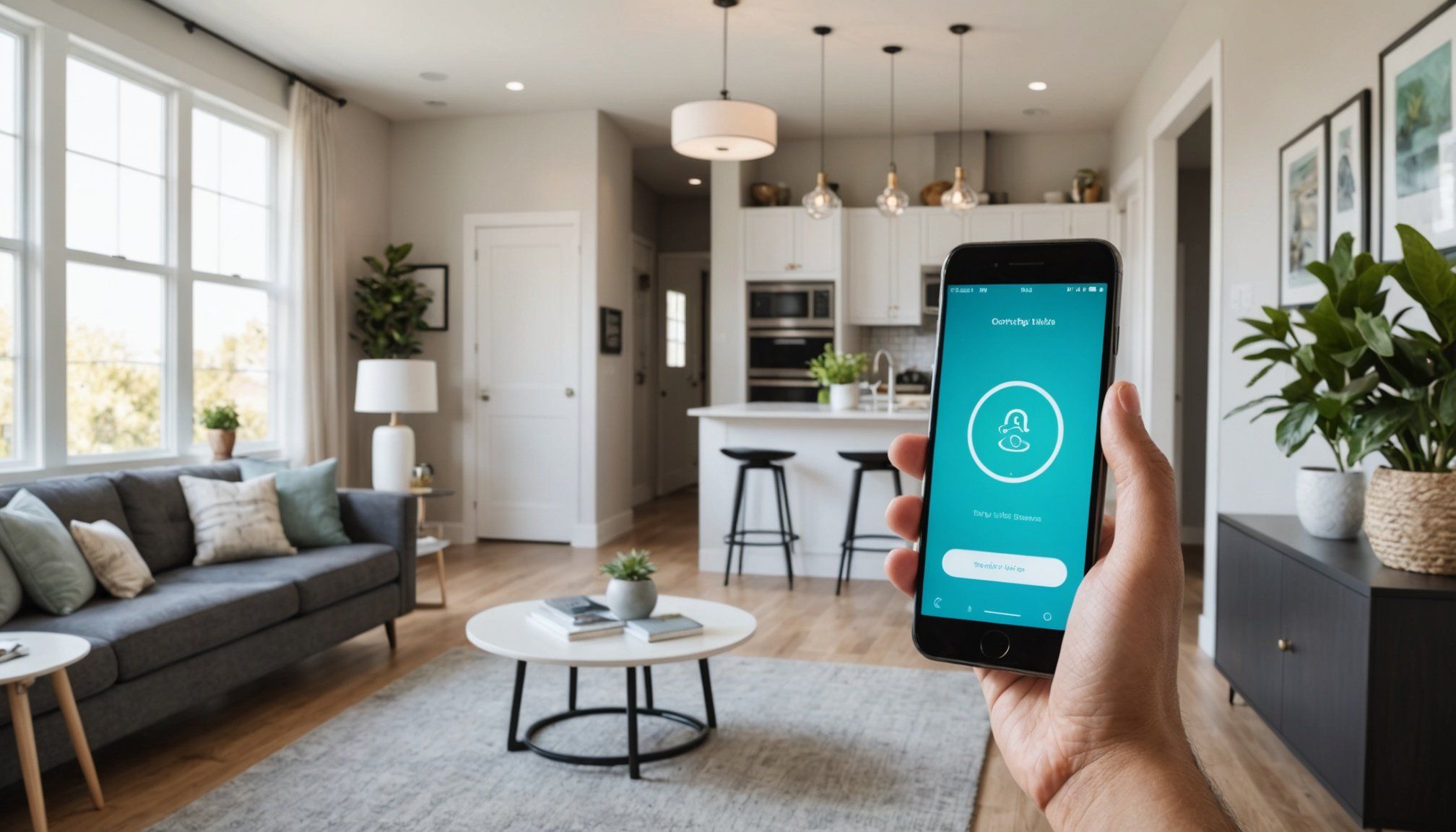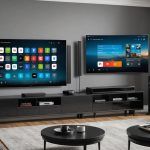Unlocking Your Smartphone’s Potential: The Ultimate Guide to Creating and Managing Customized Smart Home Routines
In the era of smart homes, your smartphone is more than just a communication device; it’s a powerful tool to manage and automate your living space. This guide will walk you through the process of creating and managing customized smart home routines, making your life more convenient, energy-efficient, and secure.
Understanding Smart Home Automation
Smart home automation is the integration of various devices and systems within your home to create a seamless and automated living experience. This technology allows you to control lighting, heating, security, and other home devices using your smartphone or voice commands.
In parallel : Elevate your smartphone to a powerful smart home entertainment hub
Key Components of Smart Home Systems
- Smart Thermostats: Devices like the Nest Learning Thermostat or Emerson Electric’s Sensi thermostats can learn your temperature preferences and adjust them accordingly to optimize energy efficiency[4].
- Smart Lighting: Systems such as Philips Hue or LIFX allow you to control the lighting in your home remotely and set up customized lighting routines[4].
- Security Cameras: Devices like Nest Cam or Ring provide high-definition surveillance and can be integrated with other smart home devices for enhanced security[4].
- Smart Locks: Locks like August or Schlage can be controlled via your smartphone, ensuring your home is secure and accessible only to authorized individuals.
Setting Up Your Smart Home
Before diving into creating routines, you need to set up your smart home infrastructure.
Choosing the Right Hub
A central hub is often necessary to connect all your smart devices. For example, the Samsung SmartThings Hub integrates various devices under one platform, eliminating the need for multiple hubs[1].
Also read : Harnessing ai-powered mobile applications for innovative mental health tracking and support
Connecting Your Devices
Most smart devices can be connected via Wi-Fi, Bluetooth, or Zigbee. Here’s a step-by-step guide to connect your devices:
- Download the App: Download the app associated with your smart home hub or device (e.g., Samsung SmartThings, Amazon Alexa, Google Home)[1][3][4].
- Scan QR Code: Many devices, like the Amazon Smart Plug, can be connected by scanning a QR code within the app[3].
- Configure Network Settings: Ensure your device is connected to your home Wi-Fi network for remote access and control[2][3].
Creating Customized Routines
Creating routines is where the real magic of smart home automation happens. Here’s how you can do it:
Using Smart Home Apps
Most smart home apps allow you to create customized routines based on your daily habits.
- Samsung SmartThings: This app suggests new routines based on the devices you already own and allows you to share these routines with guests[1].
- Google Home: You can create routines that automate multiple actions with a single voice command or at a specific time of the day[4].
- Amazon Alexa: The Alexa app lets you create routines that can be triggered by voice commands, time of day, or specific events[3].
Example Routines
Here are some examples of routines you can set up:
- Morning Routine: Automatically turn on the lights, adjust the thermostat, and start your coffee maker as you wake up.
- Leaving Home Routine: Lock all doors, turn off lights, and adjust the thermostat to an energy-saving mode when you leave the house.
- Bedtime Routine: Dim the lights, lower the thermostat, and lock all doors with a single voice command or at a set time.
Advanced Features and Integrations
Smart home systems offer a range of advanced features that enhance your living experience.
Voice Commands
Voice assistants like Amazon Alexa, Google Assistant, and Apple’s Siri allow you to control your smart devices with voice commands.
- "Hey Google, turn on the living room lights."
- "Alexa, adjust the thermostat to 72 degrees."
- "Siri, lock all doors."
Geolocation and Presence Detection
Features like geolocation and presence detection can automatically adjust your home settings based on your location.
- Samsung SmartThings: The Home Insight feature uses AI to determine if you are present or absent and adjust settings accordingly[1].
- Google Home: Geolocation services can inform your thermostat of your imminent arrival, adjusting the temperature before you enter[2].
Energy Efficiency
Smart home devices are designed to optimize energy efficiency.
- Smart Thermostats: Devices like Nest Learning Thermostat learn your schedule and preferences to minimize energy consumption[4].
- Smart Lighting: Automated lighting routines can turn off lights when not in use, reducing energy waste[4].
Table: Comparing Popular Smart Home Systems
Here’s a comparative table of some popular smart home systems:
| Feature | Samsung SmartThings | Google Home | Amazon Alexa |
|---|---|---|---|
| Hub Requirement | Integrated Hub | Google Home Hub | Amazon Echo Hub |
| Device Compatibility | Wide compatibility | Compatible with Nest | Compatible with Amazon |
| and other Google devices | devices and third-party | ||
| devices | |||
| Voice Assistant | No built-in voice assistant | Google Assistant | Amazon Alexa |
| Routine Creation | Yes, through app | Yes, through app | Yes, through app |
| Geolocation | Yes | Yes | Yes |
| Energy Efficiency | Yes, through automated routines | Yes, through automated routines | Yes, through automated routines |
| Security Integration | Yes, with security cameras and locks | Yes, with Nest Cam and other security devices | Yes, with Ring and other security devices |
| App Interface | User-friendly | User-friendly | User-friendly |
Practical Tips and Advice
Here are some practical tips to make the most out of your smart home setup:
Start Small
Begin with a few devices and gradually expand your smart home network. This will help you understand how different devices integrate and how to optimize their use.
Use Energy Monitoring
Many smart home devices and apps provide energy consumption data. Use this information to identify areas where you can optimize energy efficiency.
Involve Family Members
Share routines and access with family members to ensure everyone is comfortable using the smart home system.
Regularly Update Software
Keep your smart home devices and apps updated to ensure you have the latest features and security patches.
Creating and managing customized smart home routines is a powerful way to enhance your living experience. By leveraging the advanced features of smart home systems, you can make your home more energy-efficient, secure, and comfortable. Whether you’re using Samsung SmartThings, Google Home, or Amazon Alexa, the key is to understand your needs and tailor your routines accordingly.
As you embark on this journey, remember that smart home technology is constantly evolving. Stay informed about new devices and features, and don’t hesitate to experiment with different routines to find what works best for you and your home.
In the words of a smart home enthusiast, “The beauty of smart home automation is that it makes your life easier and more enjoyable. It’s like having a personal assistant who takes care of all the little things, so you can focus on what really matters.” With the right setup and routines, you can unlock the full potential of your smart home and transform your living space into a haven of comfort and convenience.










